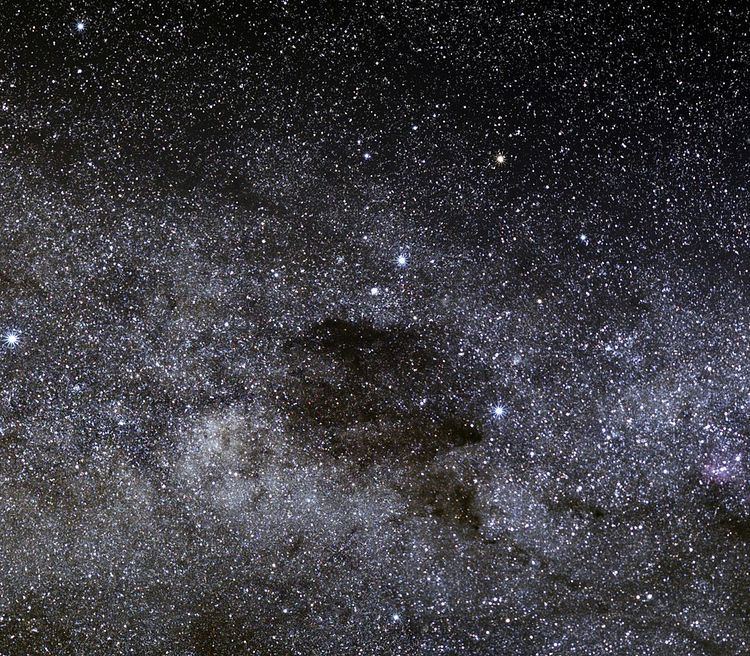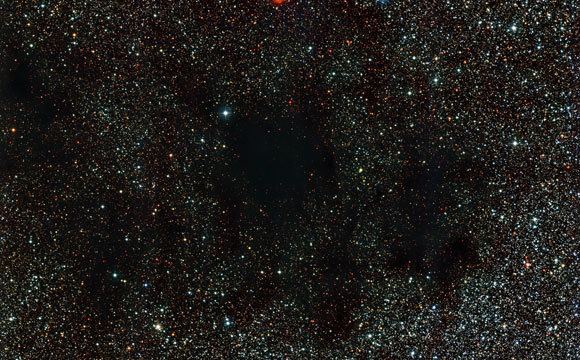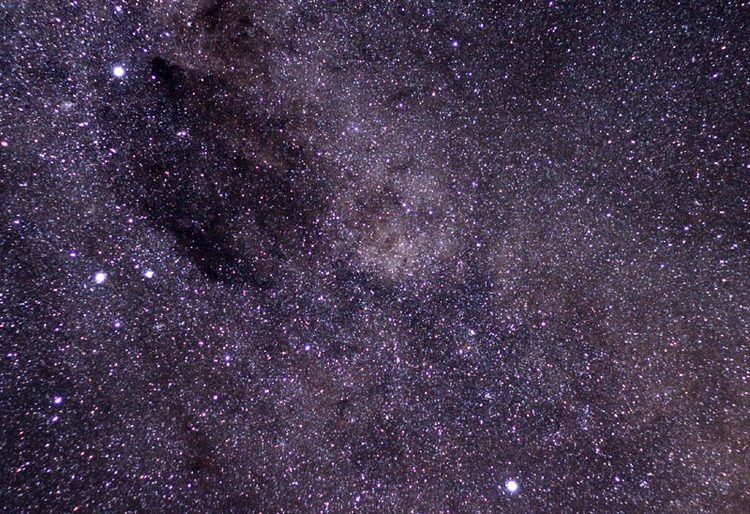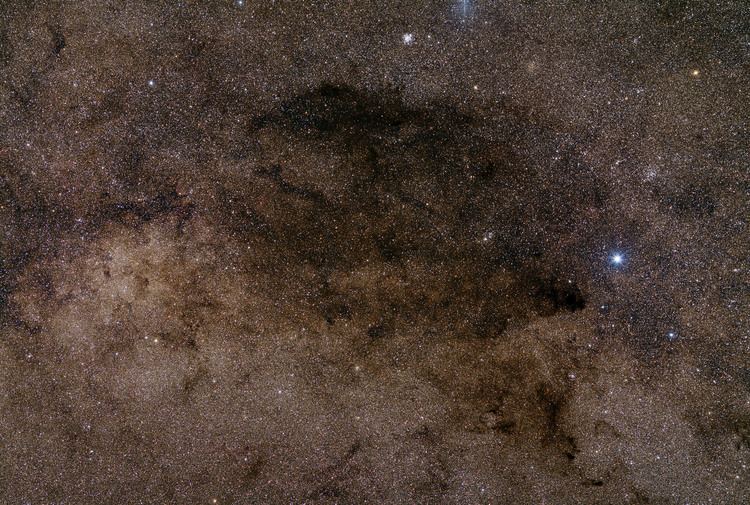Right ascension 12 50 Apparent dimensions (V) 7 × 5 ° Designations C99 | Declination −62° 30′ Radius 30–35 ly ly Distance to Earth 600 light years | |
 | ||
Coordinates RA 12h 50m 0s | Dec -62° 30′ 0″ Similar Jewel Box, NGC 4372, IC 2602, NGC 3532, Omega Centauri | ||
Zooming in on the dark and dusty coalsack nebula
The Coalsack Dark Nebula (or simply the Coalsack) is the most prominent dark nebula in the skies, easily visible to the naked eye as a dark patch silhouetted against the southern Milky Way. It is located at a distance of approximately 600 light years away from Earth, in the constellation Crux.
Contents

General information

The Coalsack Dark Nebula covers nearly 7° by 5° and overlaps somewhat into the neighbor constellations Centaurus and Musca. The first observation was reported by Vicente Yáñez Pinzón in 1499. It was named “il Canopo fosco” (the dark Canopus) by Amerigo Vespucci and was also called “Macula Magellani” (Magellan's Spot) or “Black Magellanic Cloud” in opposition to the Magellanic Clouds.

In 1970, Kalevi Mattila proved the Coalsack is not totally black. It has a very dim glow (10% of the brightness of the surrounding Milky Way), which comes from the reflection of the stars it obscures.

The Coalsack is not present in the New General Catalogue and in fact does not have an identification number (outside of the Caldwell Catalogue, in which it is C99).
The Coalsack is important in Australian Aboriginal astronomy, and forms the head of the Emu in the sky in several Aboriginal cultures. Amongst the Wardaman people, it is said to be the head and shoulders of a law-man watching the people to ensure they do not break traditional law. According to a legend reported by W.E. Harney, this being is called Utdjungon and only adherence to the tribal law by surviving tribe members could prevent him from destroying the world with a fiery star. There is also a reference by Gaiarbau (1880) regarding the coalsacks replicating bora rings on earth. These astronomical sites allowed the spirits to continue ceremony similar to their human counterparts on earth. As bora grounds are generally located on the compass points north/south, the southern coal sack indicates the initiation/ceremonial ring.
In Inca astronomy this nebula was called Yutu meaning a partridge-like southern bird or Tinamou.
In fiction
The Coalsack is mentioned in the Star Trek: The Original Series episodes "The Immunity Syndrome" and "Let That Be Your Last Battlefield", as well as 2001: A Space Odyssey by Arthur C. Clarke.
In the Solar Queen series by Andre Norton, several characters swear "...by the Coalsack's Ripcord!"
The Coalsack figures prominently in the Larry Niven and Jerry Pournelle's science fiction novel The Mote in God's Eye and its sequels, The Gripping Hand and Outies.
Also, Henry De Vere Stacpoole described the Coalsack in his novel, The Blue Lagoon (1908), as Lestrange observes it from the deck of the Northumberland, "In the Milky Way, near the Southern Cross, occurs a terrible circular abyss, the Coal Sack. So sharply defined is it, so suggestive of a void and bottomless cavern, that the contemplation of it afflicts the imaginative mind with vertigo. To the naked eye it is as black and dismal as death, but the smallest telescope reveals it beautiful and populous with stars. Lestrange’s eyes travelled from this mystery to the burning cross, and …"
The Coalsack is mentioned in the Futurama episode "Hell Is Other Robots".
In the film Night on the Galactic Railroad, the character Campanella ends going to the Coalsack.
In the film, The Chronicles of Riddick, the character Imam convinces Riddick to help his people against the Necromongers, and says, "The Coalsack planets are gone.".
In Brian J. Clarke's novella the Expediter, a world of mysterious towers - and the aliens studying them - are found "behind the Coalsack."
